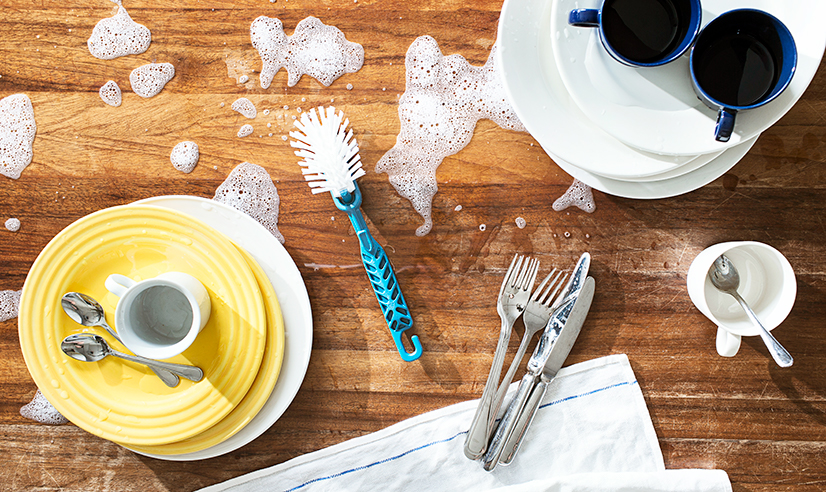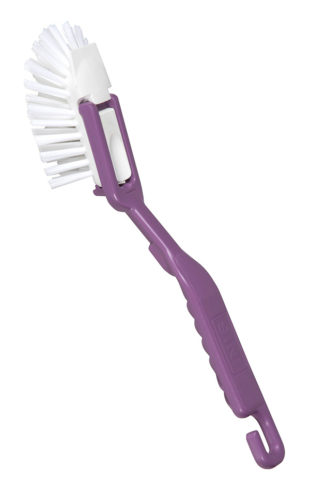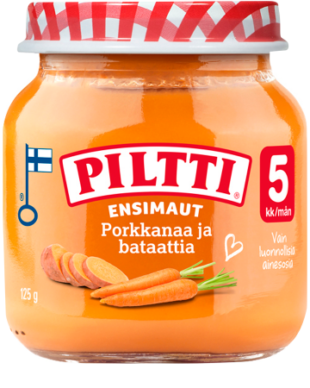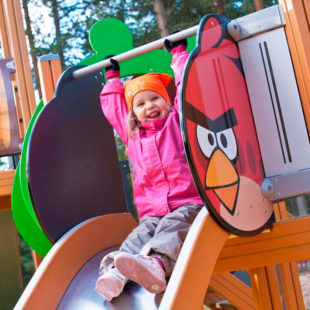The new lives of materials

S
ome 65% of all packaging waste is recycled in Finland, but what kind of things are made from recycled packaging materials? The answer: all sorts of things, from familiar consumer products to materials for the manufacturing sector. The use of recycled material reduces an end product’s carbon footprint, improves company image, and can offer material cost savings.
Recycled plastic turns into a dish brush
Sinituote, a manufacturer of cleaning tools, uses recycled plastic as a raw material in its dish brushes and toilet brushes. Replacement heads for dish brushes and lint rollers are also made of recycled plastic. Approximately 15% of Sinituote’s plastic products are made of recycled plastic.
“We are also testing new products in which we could use recycled plastic,” says Marika Karppinen, Sinituote’s Product Manager.
Recycled plastic can easily replace polypropylene, which is the most commonly used type of plastic in Sinituote’s products. Karppinen explains that it is more difficult to replace raw materials with recycled materials in products that are technically more complex.
The raw material used in recycled coloured dish and toilet brushes are plastic granules made by Fortum. The granules are grey, so the colour of the finished product is not as bright as a product made with new raw material.
The recycled plastic used for the white parts, such as dish brush replacement heads and lint roller cases, is surplus film from industrial seals.
Using recycled plastic is how we do our bit for the environment.
Sinituote pays about the same price for recycled material as for new plastic. However, it takes time to test recycled materials and machines must be specifically adjusted for them, as products made of recycled plastic must also be of top quality.
“Using recycled plastic is how we do our bit for the environment. By placing plastic packaging in a recycling container, everyone can help us to be eco-friendlier,” says Karppinen.
Piltti baby food factory uses recycled glass
At Nestlé’s baby food factory in Turku, baby food by Piltti, Bona, Nestlé and Naturnes is always packed in glass jars with metal lids. 60% of the raw material used in the glass jars is recycled glass, and the proportion of recycled metal in the lids is 15%.
The glass jars and metal lids that Nestlé uses are manufactured in Germany and Poland. Both recycled and new glass raw materials are melted and moulded into the jars.
“It’s not possible to increase the proportion of recycled glass as there would be too many impurities in the glass, which would diminish its quality,” explains Otto Kuisma, Head of Environment, Health and TPM at Nestlé Finland.
Glass waste is also generated at Nestlé’s Turku plant when a jar of baby food is opened for food analysis, for example. Sometimes a pallet comes to the factory with one broken jar, which means that the entire pallet of jars must be disposed of for safety reasons.
60% of the raw material used in the glass jars is recycled glass.
This glass waste is recycled and ends up as a foam glass, which is used as frost insulation or drainage material on building sites.
Nestlé’s global goal is to make all its packaging materials recyclable or reusable by 2025, a goal that has already been achieved at the Turku factory.
“Circular economy is all the rage. Using recycled materials is also a cost issue: it would certainly be more expensive to manufacture packaging from new materials,” says Kuisma.
Recycled metal can be found in cans and car parts
Almost all metal products contain recycled metal. For example, at least a quarter of tuna tins is made up of recycled metal.
Recycled metal waste first goes to an operator that sorts the waste into different types, such as aluminium, magnetic and non-magnetic metals. Metals are also crushed or cut at this point. Metal mass is then sold to other companies.
Recycled metal is melted with virgin metal at smelteries, which sell raw metal to manufacturers.
“The car industry is one of the major users of recycled materials, as it manufactures a wide range of metal parts,” says Satu Estakari, Managing Director at Mepak-Kierrätys Oy, which is the producer organisation for metal packaging.
The car industry is one of the major users of recycled materials, as it manufactures a wide range of metal parts.
The carbon footprint of recycled metal is significantly lower than that of virgin metal. Metal can also be recycled again and again without compromising the quality of the raw material.
“Metal recycling has a remarkably positive impact on the environment,” says Estakari.
Recycled cardboard turns into surface material for playground equipment
Kotkamills, the Finnish forest industry company, makes durable lamination paper for a variety of applications from recycled corrugated cardboard such as old boxes. Lamination paper is used in kitchen worktops as well as in both interior and exterior wall panels in buildings, for example.
Laminate made from lamination paper is used in the playground equipment manufactured by Lappset, which has exported Angry Birds theme parks across the world, including in China.
“As the world goes greener, our customers appreciate the use of recycled fibre materials,” says Director Ville Seppälä from Kotkamills.
About half of Kotkamills’ lamination paper products contain recycled materials, the proportion of which varies between 25–70%.
Recycled fibre replaces pulp made from sawdust.
For us, recycled fibre is an alternative raw material because it is better for us not to be dependent on just one raw material.
“For us, recycled fibre is an alternative raw material because it is better for us not to be dependent on just one raw material. Regardless of the fluctuations in the price of raw materials and their processing, recycled fibre is a competitive raw material compared to pulp,” says Seppälä.
Kotkamills has a plant for recycled fibre, where cardboard is cleaned of impurities and other materials such as plastic are removed. Kotkamills mainly uses cardboard collected from shops, plants and manufacturers.


